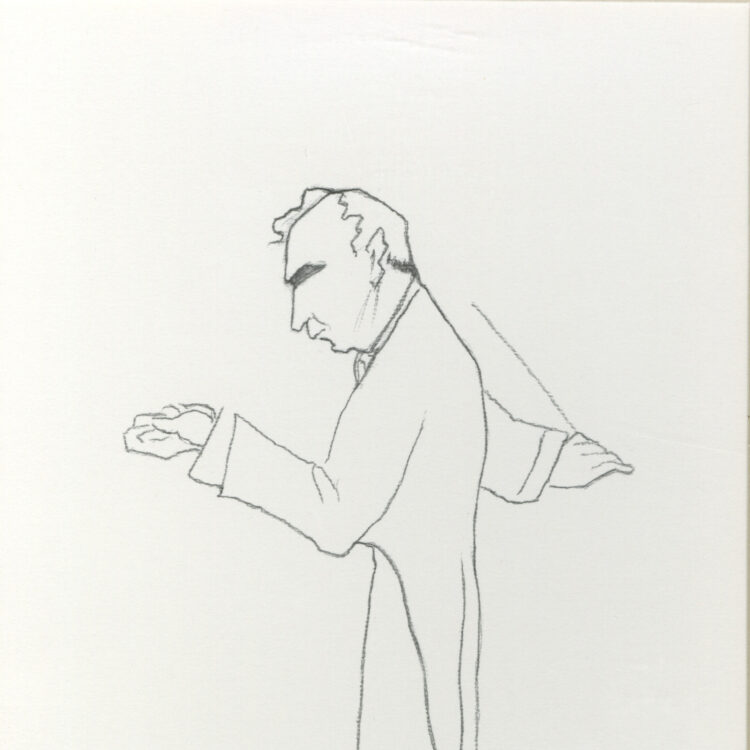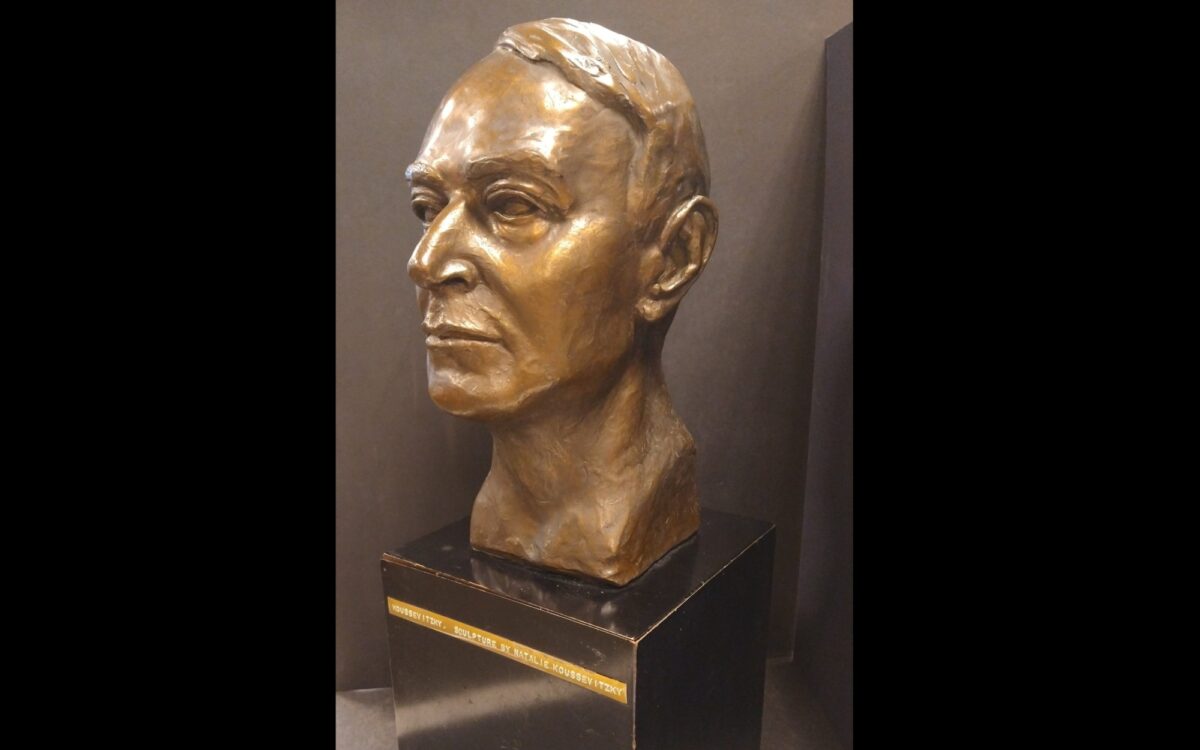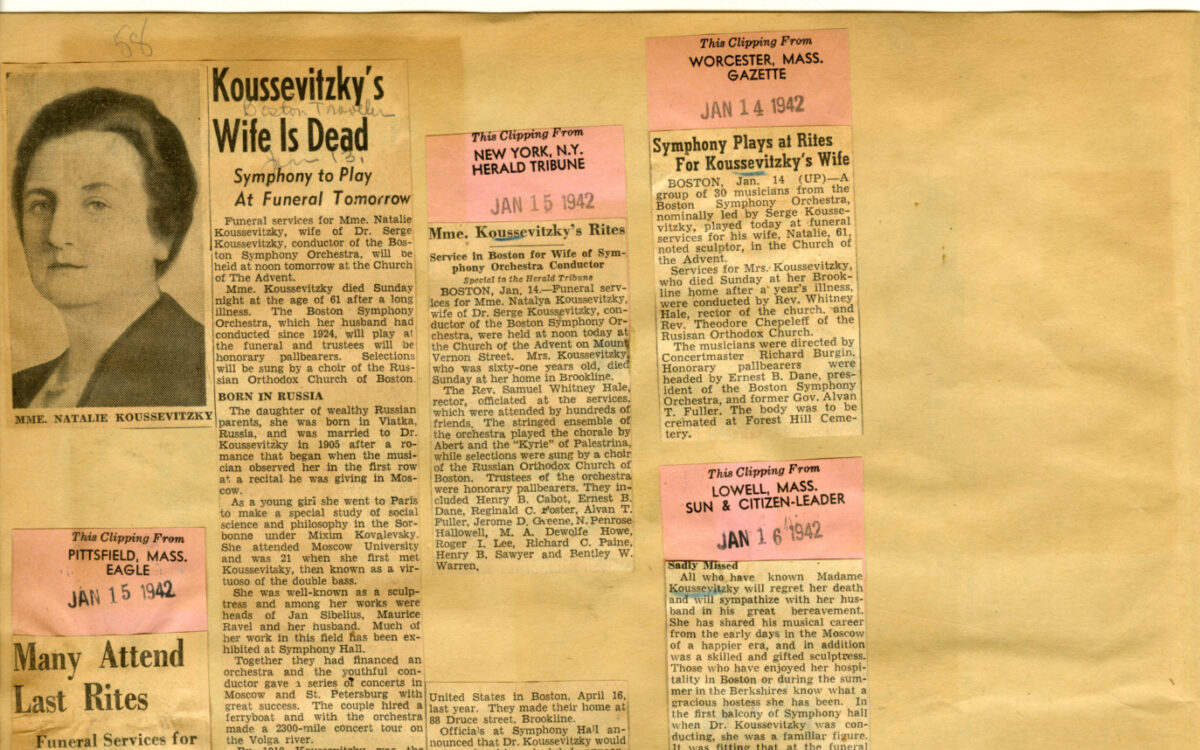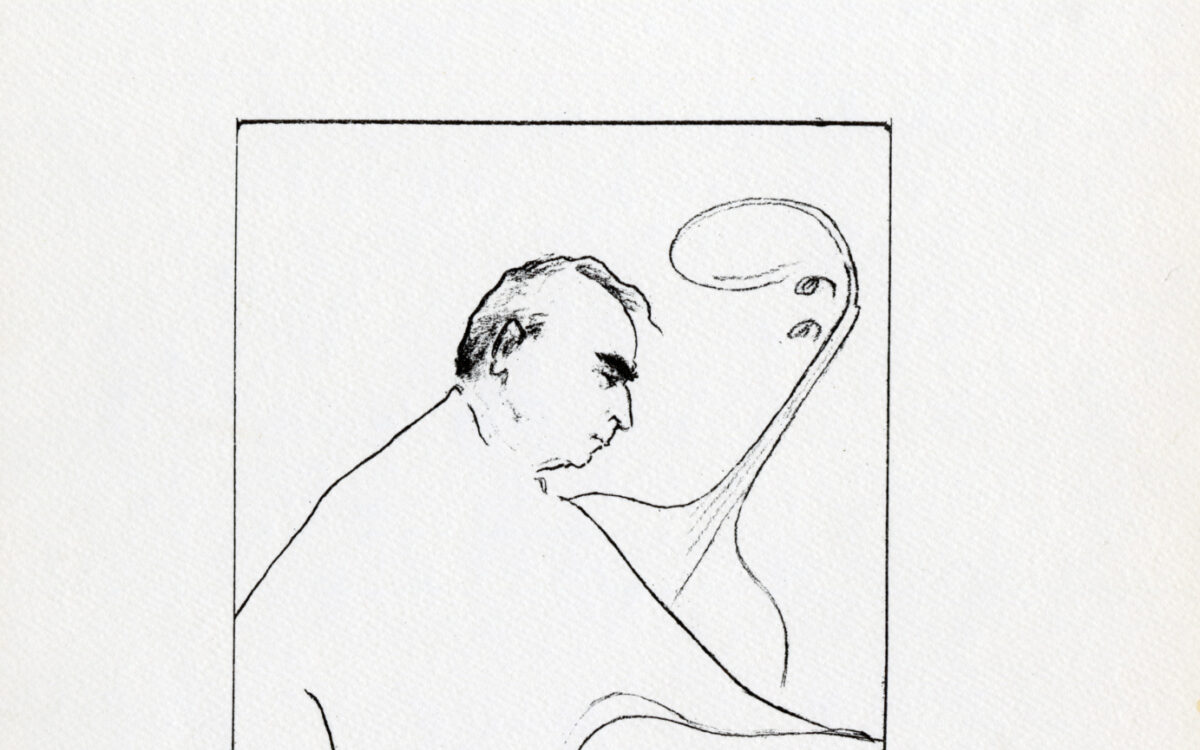Koussevitzky as Subject: The Art of the Koussevitzkys
Serge Koussevitzky’s career was significantly impacted by the behind-the-scenes activities of both his second and third wives, Natalie Ushkova and Olga Naumova. Natalie's family fortune greatly contributed to Serge's ability to pursue the conducting training he needed, and Olga supported his activities both as secretary and advocate for his legacy after his death. This exhibit highlights some of the works they created as artists in their own right.

Sketch by Olga Naumova Koussevitzky: Serge Koussevitzky conducting
Natalie Ushkova Koussevitzky
Portrait of Natalie Ushkova Koussevitzky (1880–1942)
Serge Koussevitzky’s second Natalie Ushkova was the great-granddaughter of the founder of the Gubkin tea company fortune. Her wealth contributed greatly to the advancement of her husband’s career, enabling him to hire his own orchestra to develop his conducting skills, as well as fund an orchestra to tour towns along the Volga River that had no symphony orchestras established.
Photograph by Bachrach
Bust of Serge Koussevitzky
In addition to the bust of her husband Serge Koussevitzky, Natalie also cast the heads of composers Jean Sibelius and Maurice Ravel.
Sculpture by Natalie Koussevitzky
Newspaper clipping from the Philadelphia Record, January 1, 1939
A feature on Koussevitzky preceding a concert by the BSO at the Philadelphia Academy of Music (a frequent tour stop for the orchestra) provides a brief history on Koussevitzky’s double bass and conducting career, including Natalie’s wedding gift to her husband of a symphony orchestra.
Serge Koussevitzky and his wife Natalie Ushkova Koussevitzky at home
First encountering Serge at one of his double bass recitals, Natalie supported his dream to become a conductor, both figuratively and fiscally. The bust she sculpted of Serge (and which is featured in this exhibit) can also been seen in this photograph.
Life, February 26, 1940
Obituaries for Natalie Ushkova Koussevitzky (1880–1942)
Natalie met her husband in Moscow and they were married in 1905. Shortly thereafter, Koussevitzky transitioned from double bass soloist to a conducting career. BSO musicians performed at her funeral services, and BSO board president Ernest B. Dane organized her pallbearers.
Obituaries for Natalie Ushkova Koussevitzky (1880–1942)
In addition to funding her husband's conducting career, Natalie was also involved in operating Éditions Russes de Musique, the publishing company that Koussevitzky established to promote contemporary composers.
Olga Naumova Koussevitzky
Sketch by Olga Naumova Koussevitzky: Serge Koussevitzky and his bass
Sketch by Olga Naumova Koussevitzky: self-portrait
Olga and Serge Koussevitzky at Tanglewood
Olga Naumova (Natalie’s niece) was initially hired as Koussevitzky’s secretary, but five years after Natalie’s death, Serge and Olga married in 1947, and Olga continued to promote Koussevitzky’s legacy after his death in 1951.
Photograph by Heinz Weissenstein (Whitestone Photo)
Olga Koussevitzky presenting Seiji Ozawa with the Koussevitzky Prize at the conclusion of the 1960 Tanglewood Music Center season
The Koussevitzky Prize was established at the Tanglewood Music Center in 1954 to recognize an outstanding student conductor. After winning the prize in 1960, Seiji Ozawa became the Boston Symphony Orchestra’s thirteenth Music Director in 1973. Other recipients of the award (which is not awarded annually) include Michael Tilson Thomas (1969) and Marin Alsop (1989).
Photograph by Heinz Weissenstein (Whitestone Photo)
In Memoriam for Olga Koussevitzky (1901-1978), printed in BSO program book
Olga continued her husband’s commitment to new music by taking the reins at the Koussevitzky Music Foundation and the American International Music Fund. She maintained the Koussevitzky summer home near Tanglewood (Seranak), which the BSO later purchased after her death.











